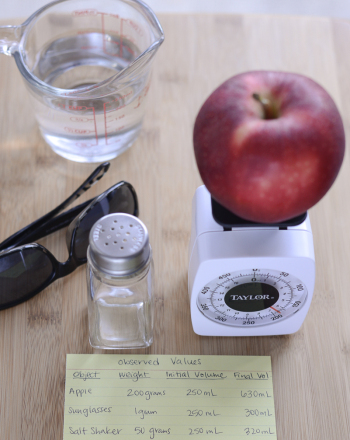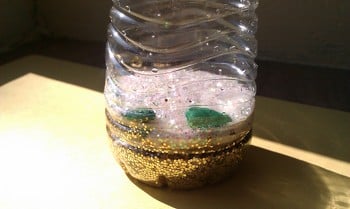Science project
Calculate the Mass of the Earth
Mass is a measure of how much matter, or material, an object is made of. Weight is a measurement of how the gravity of a body pulls on an object. Your mass is the same everywhere, but your weight would be vastly different on the Earth compared to on Jupiter or the Moon.
G, the gravitational constant (also called the universal gravitation constant), is equal to
G = 6.67 * 10-11N(m / kg)2
Where a Newton, N, is a unit of force and equal to 1 kg*m/s2. This is used to calculate the force of gravity between two bodies. It can be used to calculate the mass of either one of the bodies if the forces are known, or can use used to calculate speeds or distances of orbits.
Orbits, like that of the moon, have what is called a calendar period, which is a round number for simplicity. An example of this would be the Earth has an orbital period of 365 days around the sun. The sidereal period is a number used by astronomers to give a more accurate description of time. The sidereal time of one spin of the Earth is 23 hours and 56 minutes, rather than a round 24 hours. The time period of an orbit, which you will use in your calculations in this exercise, will have a great effect on the outcome of your answers.
Materials
- Calculator
- Calendar
- Internet
Procedure
- Use a calendar to determine how long it takes for the moon to orbit the Earth. Do some research on the internet to find the sidereal period of the moon.
- Use the following equation to calculate the average velocity of the Moon
v = 2πr / T
Where v is the average velocity of the moon,
r is the average distance between the moon and the Earth, taken as 3.844 x 108 m,
and T is the orbital period, with units of seconds.
- Calculate the mass of the Earth using both the calendar period of the moon and the sidereal period of the moon. Why are they different? Which is a more accurate calculation and why?
Me = v2r / G
Where Me is the mass of the Earth, in kilograms,
v is the average velocity of the moon,
r is the average distance between the moon and the Earth
and G is the universal gravitation constant.
Results
The sidereal period of the moon, which is 27.3 days, will give you a calculation of Earth's mass that's more accurate than the calendar period of the moon. The mass of the Earth is 5.97 x 1024 kg.
That is 5,973,600,000,000,000,000,000,000 kg!
Why?
Sir Isaac Newton’s Law of Universal Gravitation states that all masses in universe are attracted to each other in a way that is directly proportional to their masses. The universal gravitation constant gives the relation between the two masses and the distance between them. For most things, the masses are so small that the force of attracted is also very small. This is why you don't get pulled by your friends' gravity enough to get stuck to them!
These gravitational forces are extremely useful, as they keep the plants in orbit around the Sun, and the Moon in orbit around the Earth. They also keep the satellites in orbit that bring us information from space and allow us to communicate with people across the world instantaneously.
For further projects, you can use the same ideas to calculate the mass of the Sun, the center of our solar system, using information for any of the planets or other objects that consistently orbit the Sun (such as the planetoid Pluto).
Education.com provides the Science Fair Project Ideas for informational purposes only. Education.com does not make any guarantee or representation regarding the Science Fair Project Ideas and is not responsible or liable for any loss or damage, directly or indirectly, caused by your use of such information. By accessing the Science Fair Project Ideas, you waive and renounce any claims against Education.com that arise thereof. In addition, your access to Education.com's website and Science Fair Project Ideas is covered by Education.com's Privacy Policy and site Terms of Use, which include limitations on Education.com's liability.
Warning is hereby given that not all Project Ideas are appropriate for all individuals or in all circumstances. Implementation of any Science Project Idea should be undertaken only in appropriate settings and with appropriate parental or other supervision. Reading and following the safety precautions of all materials used in a project is the sole responsibility of each individual. For further information, consult your state's handbook of Science Safety.













